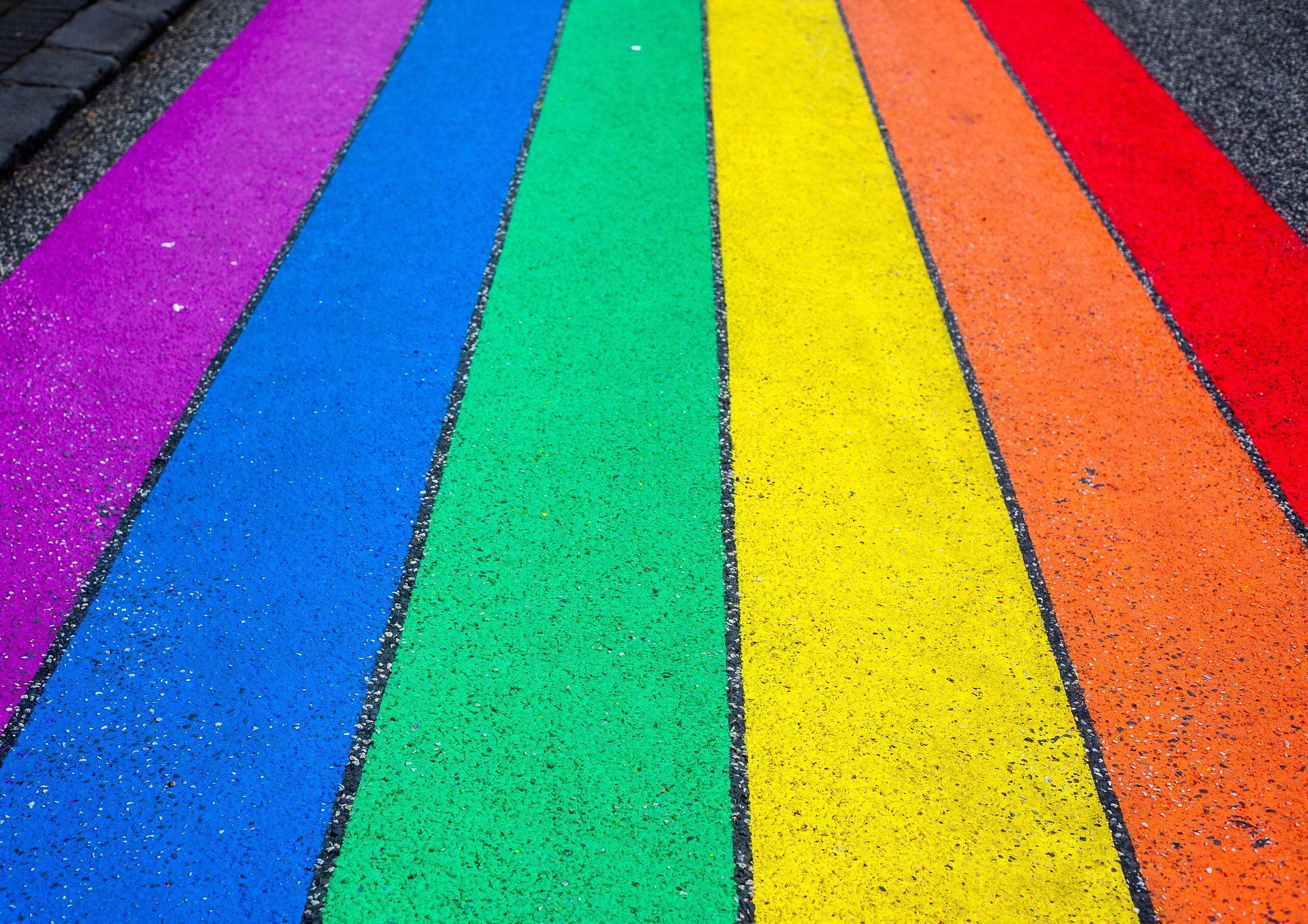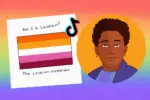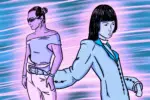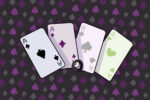June 2020 has given Pride Month a whole new look amidst the coronavirus pandemic, as pride parades with rainbow confetti-covered streets have been replaced with digital events that can be streamed from the comfort of home. This year’s more isolated pride celebrations are not new to me — I’ve never really been one to outwardly express my gay pride. That’s not to say I’m not gay (because, believe me, I most certainly am); rather, for most of my life I’ve never been “out enough” to feel comfortable throwing on a pride shirt and walking down the street arm-in-arm with fellow members of the LGBTQ+ community.
For me, June is a time of reflection. When I see rainbow-colored flags waving outside store windows, I am reminded of where I was in my coming out process, one, two and three years ago. I think about how I kept a journal filled with love poems I wrote to girls tucked away underneath my mattress in high school, how I shaved my head at 18, and how, most recently, I packed all my old clothes away into a box and substituted them for garments from the men’s department — small steps, whether cringey or liberating, that helped me come to terms with who I am — small steps I took to live a life that feels like mine. As a queer person who was closeted just two years ago, I never would have gotten to where I am now had I not been shown what it means to live openly and authentically by some of the people who do it best: the icons of the LGBTQ+ community.
Here are the lessons I have learned from some of my queer icons, the people who have helped me become the person I am today.
Tegan Quin & Sara Quin: Your Queerness is a Gift
I discovered Tegan and Sara’s band back in 2016 when I did a Google search for “lesbian musicians” (so gay of me, I know). When I came across the Canadian twins’ punk/pop band, I was 16 and looking for a break from the heteronormative pop music overflowing mainstream radio.
Little did I know, my Google search would go on to create an obsession that would last even now, four years later. Since then, I have listened to all of their albums, sung every lyric they have written and even sat in my narrow walk-in closet watching bootlegged videos of their concerts on YouTube when feeling particularly gay and alone (I told you, I was closeted!).
Like both Tegan and Sara, I am an identical twin and I am also gay — two things I have in common with hardly anyone I know, not even my own identical twin sister. When I found their band, I encountered music and stories I could relate to — something that, as a young queer person, I never had before. While there is no doubt people of all genders and sexualities can and do relate to Tegan and Sara’s music, I will selfishly admit that when I discovered their band the summer before my junior year of high school, I felt like their music was made just for me.
The queer icons have worked incredibly hard over their 20+ year career, having released nine studio albums, written a memoir, toured the world on tour cycle after tour cycle, and even creating the Tegan and Sara Foundation, a nonprofit organization to help improve the lives of LGBTQ+ girls and women all while plowing through experiences of homophobia.
I’ve learned a lot from the two queer icons, but one thing that has stood out to me is how openly and proudly the two talk about their sexuality, which often comes up in their on-stage banter in between sets and in encounters with the press.
In an interview for the podcast “Queery,” Tegan Quin expressed gratitude for being queer.
“I can’t believe my luck that I got to be queer,” Quin said. “I know it’s hard, but my perspective, my empathy, I just feel really lucky.”
It is not that Tegan and Sara never struggled with their queerness since the two spoke candidly about their difficulty in coming to terms with their sexualities in their New York Times bestselling memoir, “High School.” However, today, as two out, confident and successful women, Tegan and Sara view their queerness as a gift, embracing it fully in their music and life. I have Tegan and Sara, and a Google search, to thank for helping me flip the narrative of shame that I and so many people in the LGBTQ+ community are brought up believing, and for teaching me that if you let it, being gay can be the source of more joy than pain.
Kate Moennig: Androgyny is Hot, Don’t Let Anyone Tell You Otherwise
Katherine Moennig, who goes by Kate, gained notoriety in the LGBTQ+ community when she starred in Showtime’s 2004 television show “The L Word,” a series about a group of lesbians living in Los Angeles. Moennig played the role of Shane McCutcheon, a mysterious and complicated character known for easily seducing both gay and straight women. Since before and after the show aired, there has never been a character quite like Shane on TV — an androgynous female who is self-assured, calm and sexy — making Moennig one of many queer icons to lesbians all over the world.
Shane, who I first discovered in high school, became the first character on TV I could relate to. She possessed a masculine energy that was absent in every other woman, on every other TV show, on every other network. Her look consisted of loose T-shirts, jeans hung low around her hips and, despite being a stylist, a short disheveled haircut. In high school, I was by no means as stylish Shane — I can tell the day of the week a picture was taken based off an alternating pattern of striped and solid shirts I wore — but I knew I wanted to look like her.
While Shane and Kate Moennig are not the same person, there seems to be, from an outside perspective, striking similarities. Like Shane, Moennig has a calm and collected demeanor with an androgynous style and a masculine edge, making her beyond attractive to all types of women.
It wasn’t until I saw Kate Moennig when I realized women can be both androgynous and attractive. Prior to that point, I was mostly ashamed of my tomboy-ish baggy-jeans-and-basketball-shoes style, a look that most people in my life wanted me to substitute with dresses and nail polish. Moennig taught me that, with the exception of gutting a few of my outdated striped shirts, I didn’t have to sacrifice my masculine style to be considered attractive. In fact, I could be captivating because of it.
Ellen DeGeneres: If Nothing Else, Be Authentic
Ellen DeGeneres is not only one of my queer icons in the gay community, but easily one of the most visible and recognized lesbians in the mainstream media. While many know DeGeneres from her daily afternoon talk show, “The Ellen DeGeneres Show,” she actually began her career as a stand-up comedian at the age of 23.
After gaining popularity as a comic, DeGeneres landed her own sitcom called “Ellen,” on prime-time television in 1994. DeGeneres played Ellen Morgan, a bookstore owner who, despite dating men here and there, rejected most notions of femininity. The sitcom made headlines in 1997 when Ellen Morgan came out as gay in Episode 23 of Season 4. At the same time, DeGeneres also came out in real life, making her the first openly gay actor to play an openly gay character in the history of television.
DeGeneres faced severe criticism after coming out publicly, including death threats and humiliation on late night television. A year after the sitcom released the coming out episode, the network decided to cancel the show. By coming out publicly, DeGeneres paved the way for other actors in the LGBTQ+ community to do the same, which, over time, began to normalize gay representation both on and off the screen. For DeGeneres, though, it wasn’t until 2003 when she found work again, this time hosting her esteemed daily talk show.
If there’s one thing DeGeneres has taught me, it is that speaking your truth can have massive benefits for your life. On an episode of her talk show celebrating the 20th anniversary of her coming out, DeGeneres spoke with Oprah about embracing authenticity.
“We’re not supposed to conform, we’re not supposed to be like somebody else, we’re not supposed to act like somebody else,” DeGeneres said. “As long as you stay true to exactly who you are, you will be rewarded in ways that you cannot imagine.”
The right time to come out differs for everyone, but ultimately everyone does it for the same reason: to live their life authentically. When I become afraid of expressing who I am — wearing a tie to a formal event and talking about crushes I have on girls — I think about DeGeneres’ brave step into the unknown and how, in the end, she prevailed.
The more time I spend reflecting on my journey as a queer person, the more work I realize is ahead of me. There are still many people, both friends and family members, who I have yet to come out to. There are still facets of my identity that I am working to accept and love every day. I don’t consider myself a model queer person who has figured it all out, because I have not.
However, I know for certain that wherever I am in my journey, I wouldn’t be nearly as far had it not been for my queer icons, the people who led me in the right direction and instilled a sense of pride in me — a light still being released.

















